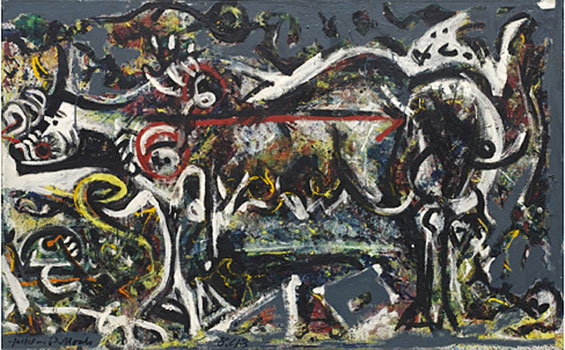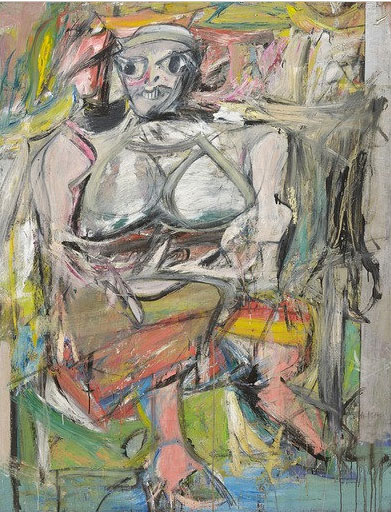Notes on Meyer Schapiro
Meyer Schapiro was responsible for organizing the dissident group of the American Artists' Congress which led to the formation of the Federation of Modern Painters and Sculptors in 1940. At the First American Artists' Congress which took place on February 14 - 16, 1936 at the New York City Town Hall, Schapiro, a Marxist who contributed articles during the 1930s to leftist publications such as The Marxist Quarterly, The New Masses and The Partisan Review, argued that art was tied to the economic and social conditions of its time. In a paper presented to the Congress, "The Social Bases of Art," he noted that "there is overwhelming evidence which binds art to the conditions of its own time and place," and that "the conception of art as purely aesthetic and individual" results in "spectacles designed for passive, detached individuals" or "an art of the studio." Such "art of the studio," according to Schapiro, "cannot really be called free, because it is so exclusive and private." (103-113)
Although initially a supporter of the Congress, Schapiro resigned from it in 1940 after the organization failed to condemn the Russian invasion of Finland. A document was presented to the Congress members, signed by Schapiro, Mark Rothko, Adolph Gottlieb, Milton Avery and other dissident members, at a meeting on April 4, 1940 challenging the membership as a whole "to make clear to the world whether the congress is a remnant of the cultural front of the Communist Party or an independent artists organization." (SG40/AG22-3) Instead, the members voted 125 to 12 to support a view expounded by the Realist painter/illustrator, Lynd Ward, who had made the case for neutrality, saying that he personally approved of both the German-Soviet pact and the invasion of Finland. As a result Schapiro and Stuart Davis (the national chairman of the Congress), resigned from the Congress along with Rothko, Gottlieb, Avery and others. The New York Times excerpted their statement of resignation in the April 17, 1940 issue:
From the statement of resignation:
"The American Artists Congress which was founded to oppose war and fascism and to advance the professional interests of artists, at its last membership meeting on April 4, endorsed the Russian invasion of Finland and implicitly defended Hitler's position by assigning the responsibility for the war to England and France.
The Congress has also revised its policy of boycotting Fascist and Nazi exhibitions (e.g. Venice and Berlin, 1936)... Moreover, congress officials have informed members that participating in a projected fascist show at Venice is a matter of individual taste. The congress no longer deserves the support of free artists. We, therefore, declare our secession from the congress and call on fellow-artists within and outside it to join us in considering ways and means of furthering mutual interests which the congress can only damage." (SM)
The article concluded that "Professor Schapiro indicated that the seceding group would seek to form an independent organization." The "independent organization" formed by some of the dissident members of the Artists' Congress, including Rothko and Gottlieb, was the Federation of Modern Painters and Sculptors. Schapiro later recalled, "We thought we ought to have an artists' organization not hostile to cultural freedom and we had many meetings to define the organization." (LI)
From the Foreword of the Constitution of the Federation:
"The purpose of this organization shall be to promote the welfare of free progressive artists working in America. It will strive to protect the artist's economic and cultural interest and to facilitate the showing of his work... We affirm our faith in the democratic way of life and its principle of freedom of artistic expression and, therefore, oppose totalitarianism of thought and action, as practiced in the present day dictatorship of Germany, Russia, Italy, Spain, Japan, believing it to be the enemy of the artist, interested in him only as a craftsman who my be exploited..." (SG215n103)
Although it stated political aims in the foreword to its Constitution, the new Federation concentrated mostly on providing opportunities for the exhibition of its members' work. They held their first Annual exhibition in March 1941. Schapiro was a member of the Federation but it was mainly Mark Rothko and Adolph Gottlieb who planned the Federation's activities. Although Schapiro did paint and had studied painting under John Sloan he was known as a writer and educator rather than as a fellow artist. (In 1987, sixty-five of his drawings and paintings from 1919 to 1979 were exhibited at Columbia University.) At the time that the dissident group resigned from the Artists' Congress Schapiro was teaching at Columbia University - hence the reference to him as "Professor" Schapiro in The New York Times article. He had been appointed a lecturer in art history at the university in 1928 and an assistant professor in 1936. In 1946 he became an associate professor, in 1952 a full professor and in 1965 a university professor. In 1973 he was named professor emeritus, teaching a graduate class on "Theory and Methods of Investigation in Art" once a week at the university. (MX)
Abstract Expressionist Robert Motherwell later recalled that Schapiro was one of the reasons he came to New York. Motherwell enrolled at Columbia University in September 1940 - the same year that Schapiro and his group resigned from the Artists' Congress.
Robert Motherwell [1974]:
"It was in order to study with Meyer Schapiro that I came to New York, which was the single most decisive factor in my development. He introduced me to European artists in exile here from the war in the 1940s, and this was the second most important factor in my orientation. I have great admiration for him as a sage, though I disagree with him on some judgments. I admire him as an irreplaceable man and as an extraordinary representative of the unique greatness of New York City."
("Meyer Schapiro, Art Historian and Critic, Dies at 91," The New York Times, March 4, 1996)
Other Abstract Expressionists to benefit from Schapiro's "judgments" were Jackson Pollock and Willem de Kooning. When, during the early 1940s the Museum of Modern Art was considering purchasing Jackson Pollock's The She-Wolf, Schapiro, who was on the acquisitions committee, voted in favour of acquiring it. (JG245-6) In early 1952, when de Kooning stopped painting what would become a key work, Woman I, it was Schapiro who encouraged him to finish it.

The She-Wolf (1943), Jackson Pollock, 41 7/8 x 67"

Woman I (1950 - 1952), Willem de Kooning, 6' 3 7/8" x 58"
Schapiro was also an advocate of Cézanne and Vincent van Gogh. An article by him on Van Gogh, "On a Painting of Van Gogh," which appeared in the October 1946 issue of the American avant-garde magazine, View, included an early use of the of the words "abstract Expressionism." (Although, according to Henry Geldzahler, the term "Abstract Expressionism" was first used in the U.S. by Alfred Barr in 1929, it is generally credited to Robert M. Coates who used it in an article published in the March 30, 1946 issue of The New Yorker.)
Meyer Schapiro [from "On a Painting of Van Gogh," View (October 1946)]:
"There is an inner growth in his [van Gogh's] art, so closely bound to his state of mind and the working out of his interior conflicts, so compulsive in its inventions, that he seems to originate symbolism and Expressionism entirely from within, apart from all that is going on around him... The pictures of his last months, no matter how fantastic certain of their forms may appear are among the most penetrating in their vision of things, their reality. His self-portrait, with the swirling, flamboyant lines of the background - one of the most advanced works of his time in the approach to an abstract Expressionism - is also a marvel of precise portraiture, with an uncanny liveness of the features." (VP236)
During the early 1950s Harry Abrams published separate monographs by Schapiro on Van Gogh and Cézanne. The monographs are still in print - Van Gogh can be found here; Cézanne here. Many of Schapiro's other writings on art would were by George Braziller as a four volume compilation beginning in 1977 with Romanesque Art. The second volume, Modern Art: 19th and 20th Centuries
was published the following year and Late Antique, Early Christian and Medieval Art
in 1979 . The final volume, Theory and Philosophy of Art: Style, Artist and Society
was published in 1994.
In addition to teaching at Columbia, Schapiro also lectured at New York University from 1932 to 1936 and at the New School for Social Research from 1936 to 1952. During 1966 - 1967 he was the Charles Norton Lecturer at Harvard University and in 1968 was appointed Slade Professor of Art at Oxford University. He was a visiting lecturer at the College de France in Paris in May 1974. In May 1975 he was awarded the Alexander Hamilton Medal for distinguished service and accomplishment by the alumni of Columbia University and in 1976 was elected a member of the National Institute of Arts and Letters. (MX)
Schapiro died on March, 3, 1996 at the age of 91 at his Greenwich Village home where he had lived for more than sixty years. (MX)
Gary Comenas
London 2008
back to September 23, 1904: Meyer Schapiro is born in Lithuania